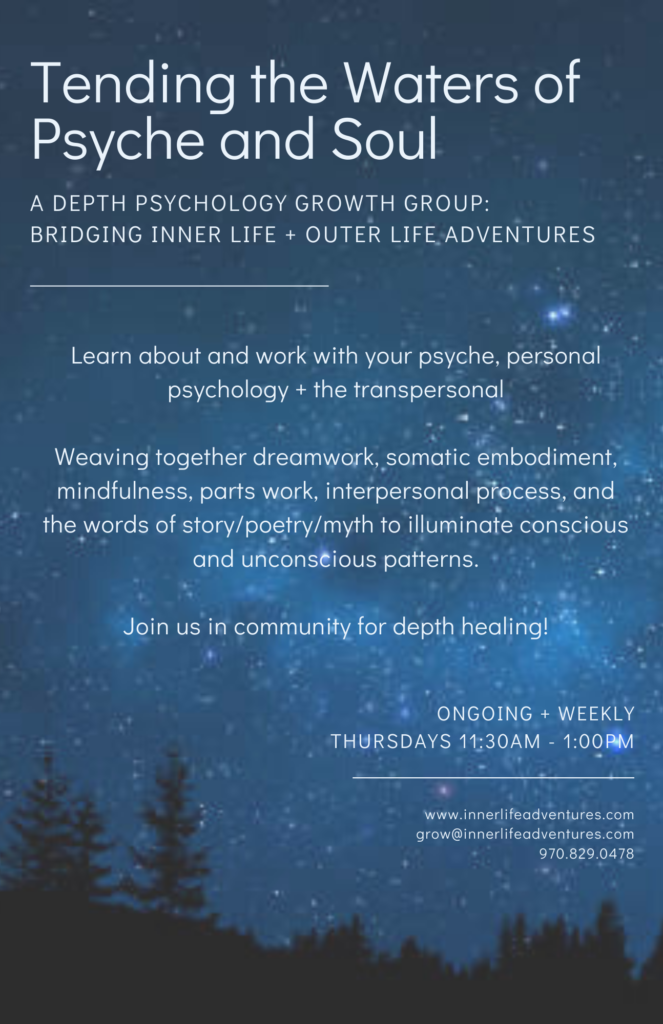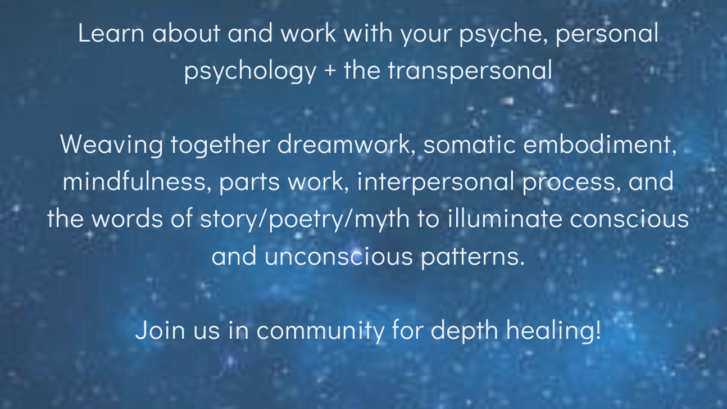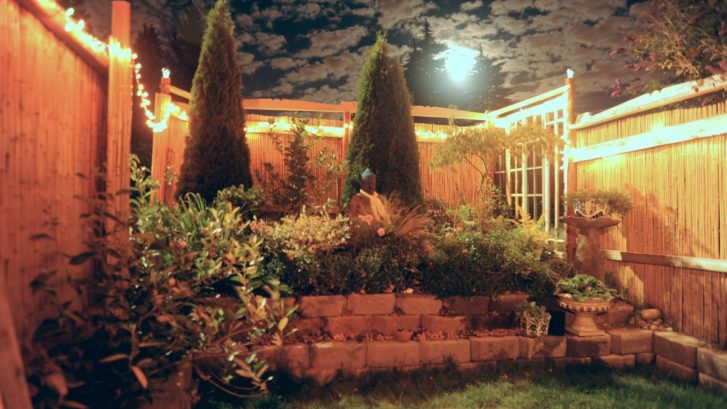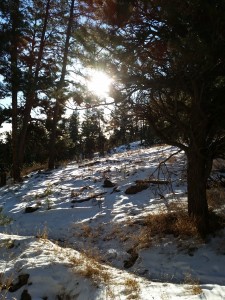Tending the Waters of Psyche and Soul
A Depth Psychology Growth Group Bridging Inner Life and Outer Life Adventures
Some Definitions of Soul
- an active or essential part
- the part of the human being that thinks, feels, and makes the body act
- the quality that arouses emotion and sentiment
- energy or power of mind or feelings; spirit; fervor
- the cause of inspiration or energy; leading spirit; prime mover
- spiritual or moral force
- the embodiment of some quality; personification
- the spirit of a dead person
- the immaterial essence, animating principle, or actuating cause of an individual life
- a person’s total self
You may or may not believe you have a soul. That is not a prerequisite for this group. If you have a desire to deepen your connection with, relationship to, and grow the health of any of the above descriptions, this group is for you. This group is a space to learn about and work with your psyche, personal psychology developed by your experiences and narrative about those experiences, interpersonal relationships (how you show up with others), and the transpersonal (anything bigger than and beyond yourself).

Join us in community for depth healing utilizing the map and mirrors of depth somatic experiential psychology. This group will bridge the world of our ordinary waking life roles and structures with that of our inner world. This is not a group about fixing you, teaching you skills, or requiring you to be “better” – rather it is a group where all of you, in your brilliance and in your struggle with shadow, is welcome. It is a group that is led by psyche, soul, and spirit informed by your life and experience facilitated by a trained guide (not a teacher).
In this group, you bring the topics – based on what is alive in you. What is challenging you? What is inspiring you? What is showing up in your world that feels impactful or meaningful? Whether that aliveness is a dream you had, a poem or song that moved you, a meditation practice that taught you, a social media post that triggered you or brightened your day, grief that brought you to your knees, a stuck-ness so tight it paralyzes you or a movement that opened or freed you, this group is a space to bring more life and soul into your world in a community of fellow practitioners.
Who is this group for?
In the group process, there are many “problems” or pain points that can lead someone to join. It could be anxiety in general, or about the state of the world and its political, social, economic, and health issues. It could be that you are feeling depressed, stuck, stagnant, alone, misunderstood, or constantly sad. You may have a hard time knowing your place in this ever changing world. This group starts with the philosophy that we are all human, and we are all in this together. And through working through our individual “problems” together, we help each other. And perhaps even see that they are not problems, but invitations to grow. This group is for people willing to engage in their own healing by giving and receiving support, and opening to wisdom and support of a variety of modalities that connect you with your heart, mind, body, and soul.
We aim toward self leadership and self actualization. How do we do that?
We are all struggling to know and become the fullest version of our “real,” true, unique selves. We create a space to learn more about ourselves and experience new aspects of ourselves through content, process, and interpersonal relationships with other group members.
We recognize we have the tendency to deny our own needs and feelings. To pretend to be someone we aren’t or to avoid facing our true self inhibits growth. In this group, we take responsibility for owning our needs and feelings and expressing unexpressed thoughts, so the facilitator and other group members co-create the space to meet those new places in yourself and possibly have your needs and feelings met in an embodied way.
We believe each individual is endowed with the urge to expand, develop, mature, and reach self-actualization. We believe that true growth and healing come from within, and this group is designed to help facilitate that process.
Even in the best of times, it is easy to fall into despair – by not living the life that is yours to live or by feeling disconnected from the greater story of life and your place in the order of things. In these times of chaos and uncertainty, this group will help you reconnect to the life that is yours to live and reconnect you with the bigger picture and meaning to provide fuel and inspiration for the challenges we face.
Logistics
Ongoing. Weekly. Thursdays 11:30-1:00. In person with a zoom in option for health or travel.
Open to all genders age 25+.
8-week minimum commitment to allow for relationships and group containers to form. Stay as long as the group is beneficial to you.
Financial Investment $30-$60 per group sliding scale.
About the facilitator: Chuck Hancock, M.Ed, LPC is passionate about group work being an important part of our growth and healing journey. With over a decade of experience guiding individual and group processes in council, dreamwork, interpersonal process groups, psychodrama, meditation, Hakomi somatic psychotherapy, ego state (parts) work, Jungian psychology, movement, music, and nature based practices. He weaves all of these practices together to help clients locate themselves in the world co-creating new experiences of authenticity, depth, meaning, insight, and inspiration. With the diversity of members, modalities, and lineages the community formed in a group experience offers more possibility and amplification of the growth process.
To register for more information to decide if this group is right for you, email [email protected] or call 970.829.0478.
“The guest is inside you, and also inside me;
you know the sprout is hidden inside the seed.
We are all struggling; none of us has gone far.
Let your arrogance go, and look around inside.
The blue sky opens out farther and farther,
the daily sense of failure goes away,
the damage I have done to myself fades,
a million suns come forward with light,
when I sit firmly in that world.
I hear bells ringing that no one has shaken,
inside “love” there is more joy than we know of,
rain pours down, although the sky is clear of clouds,
there are whole rivers of light.
The universe is shot through in all parts by a single sort of love.
How hard it is to feel that joy in all our four bodies!
Those who hope to be reasonable about it fail.
The arrogance of reason has separated us from that love.
With the word “reason” you already feel miles away.”
~Kabir








 to a stop like the Road Runner cartoon character on the edge of a cliff. A rattlesnake tumbles off the rock next to me dead center on the trail in front of me. Only 6” from my feet, my body hovered over it still being pulled by my forward momentum.
to a stop like the Road Runner cartoon character on the edge of a cliff. A rattlesnake tumbles off the rock next to me dead center on the trail in front of me. Only 6” from my feet, my body hovered over it still being pulled by my forward momentum.